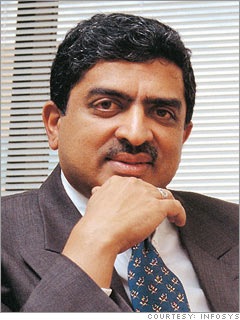Co-Chairman of the Board of Directors, Infosys
Since poor infrastructure hinders economic growth, one would expect a country should grow its infrastructure spending at rates similar to its GDP growth, if not slightly faster. However, in recent years India has allowed its infrastructure spending to drop to about 4 percent of its GDP. The result has been grossly inadequate infrastructure -- whether it is availability of power and water or the quality of its roads and ports. Private companies are compensating for lack of public infrastructure by building private alternatives. For example, Infosys spends over $6 million per year in running bus services to transport our employees to work and back. When you add up such expenses for the entire IT industry and all industries put together, the cost to the economy is staggering. And besides slowing economic growth, poor infrastructure also has a debilitating impact on the quality of life of the country's citizens. The Government of India has stated its intent to increase infrastructure spending to about 8 percent of GDP, making it comparable to China's infrastructure expenditure of 9 percent of GDP. In addition, the government has been privatizing ports and involving the private sector in development of airports and other infrastructure. However, for the infrastructure to keep pace with economic growth, much more needs to be done. And faster.
Besides increased funding, infrastructure growth requires strong planning, expertise and governance. We need to build infrastructure ahead of demand in a scalable manner, to meet future requirements rather than merely the current demand. Privatization efforts and public-private partnerships should be accelerated. In addition, the government should also focus on strengthening its infrastructure related institutions and governance so that they are able to plan for and meet the needs of a rapidly growing economy.

